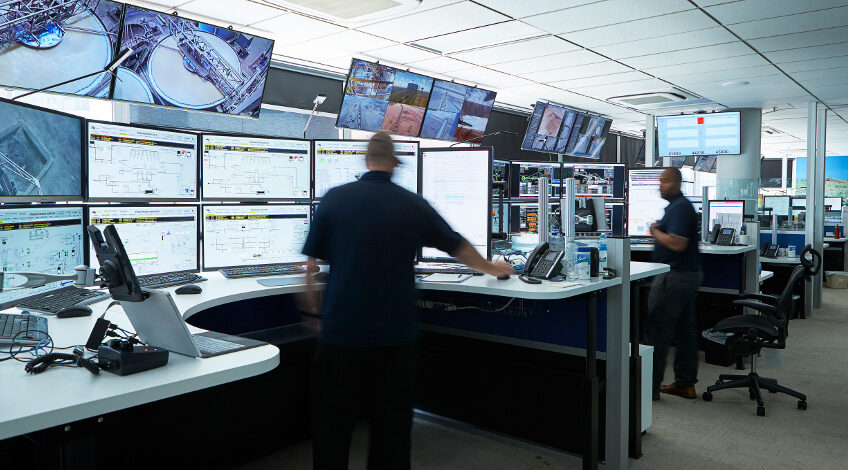Deloitte’s recent “Tracking the Trends for 2019” report argued that the mining sector will need to “re-imagine work, workers, and the…
Five Compelling Reasons to Move Mining Tech Resources Offsite
Deloitte’s recent “Tracking the Trends for 2019” report argued that the mining sector will need to “re-imagine work, workers, and the workplace” (Deloitte, 2019).
We couldn’t agree more. In particular, we believe that mining technology will be significantly impacted if the industry revisits this age-old challenge.
Why Move Mining Technology Resources Offsite?
Put simply, in the past decade, mines have spent millions on mining technology. Many however, never realise the full potential of their investments. MTS are yet to visit a site where every single (useful and relevant) feature of a fleet management system is fully implemented.
This is largely down to mines not having the right number of trained resources available to make this happen.
In this month’s MTS blog, we outline some of the benefits of relocating mining control rooms, fleet management system data analytics centres and other mining technology roles offsite and into urban centres.

Before we head into our list of compelling reasons, we need to stress that we realise this cannot happen overnight. There are clearly still hurdles to overcome. This includes network connectivity, managing a lack of face-to-face contact and (possibly) cultural challenges.
That being said, we strongly believe that in the next few years, the pace of moving these mining technology roles offsite will only increase.
1. Reduced Overheads
Locating employees at a remote mine is expensive. FIFO rotations can add significant disruption to projects, with mining operations often having to double mining technology resources simply to maintain a level of continuity. Relocating those individuals back to an urban centre is more affordable and reduces the disruption caused by rotations.
2. Create the Right Environment to Nurture Deeper Thinking in Business Intelligence
Mines are busy places. Typically, over-stretched individuals juggle many activities whilst managing constant interruptions. Regular tasks such as monthly reconciliation reporting which could potentially take only a few hours often end up getting drawn out for days, meaning proactive work to identify optimisation opportunities is dropped due to constant fire fighting.
Not only does this work environment reduce the employee’s efficiency, it can often have a negative impact on morale leading to a higher staff turnover.
Distance from the coal face can thus help the team members work more strategically. An environment that facilitates Deeper Thinking will lead to faster completion of routine tasks (i.e. recon) and free up ample time for detailed analytics that could potentially boost the operation’s results long-term.
3. Access a Wider Mining Technology Talent Pool
Well-trained business intelligence analysts, dispatchers and system administrators can have a huge and positive impact on a mine’s productivity.
Unfortunately, remote locations, long rotations and being away from loved ones are many reasons why it is hard to retain resources onsite. For certain roles in mining technology, it can take years to develop an individual. These elements of mining technology make it very difficult to both attract and retain people with the right skill sets.
But why do these people need to be onsite? Relocating their offices to areas where there is access to a larger pool of talent can make perfect sense.
4. Support Mining Technology at Multiple Mine Sites
Whilst clearly some roles are very site-specific, others aren’t. A great example of this is mobile Asset Health condition management. A number of mining houses are already piping critical Health data into centralised databases which is analysed by a regional (or global) team. This also allows them to benchmark and identify issues impacting common assets across all sites versus just one. Recommendations are sent to site with frequent collaborative sessions to discuss and gain feedback. For any operation looking at what can be relocated offsite, asset health reliability is an obvious first step, as it is in some respects, already decoupled from the “immediate” mining situation.
5. Easier to Support and Service Mining Technology Hardware
An easy one: it is much quicker and easier to maintain and support infrastructure and hardware in a city centre, than transporting both parts and people to a remote site and possibly across borders.
What next for relocating your Fleet Management System Control Rooms and Skills?
We believe that the trend is now set and over the next few years, more and more mining houses will be relocating future mining technology services to urban centres.
We also believe that the pros significantly outweigh the cons, however, there are still some obstacles. In our next blog, we will outline some of the ways of overcoming these barriers.
#MiningTechnology #fleetmanagementsystems #businessintelligence #miningdigitalstrategy #digitalroadmap
[DISPLAY_ULTIMATE_SOCIAL_ICONS]

